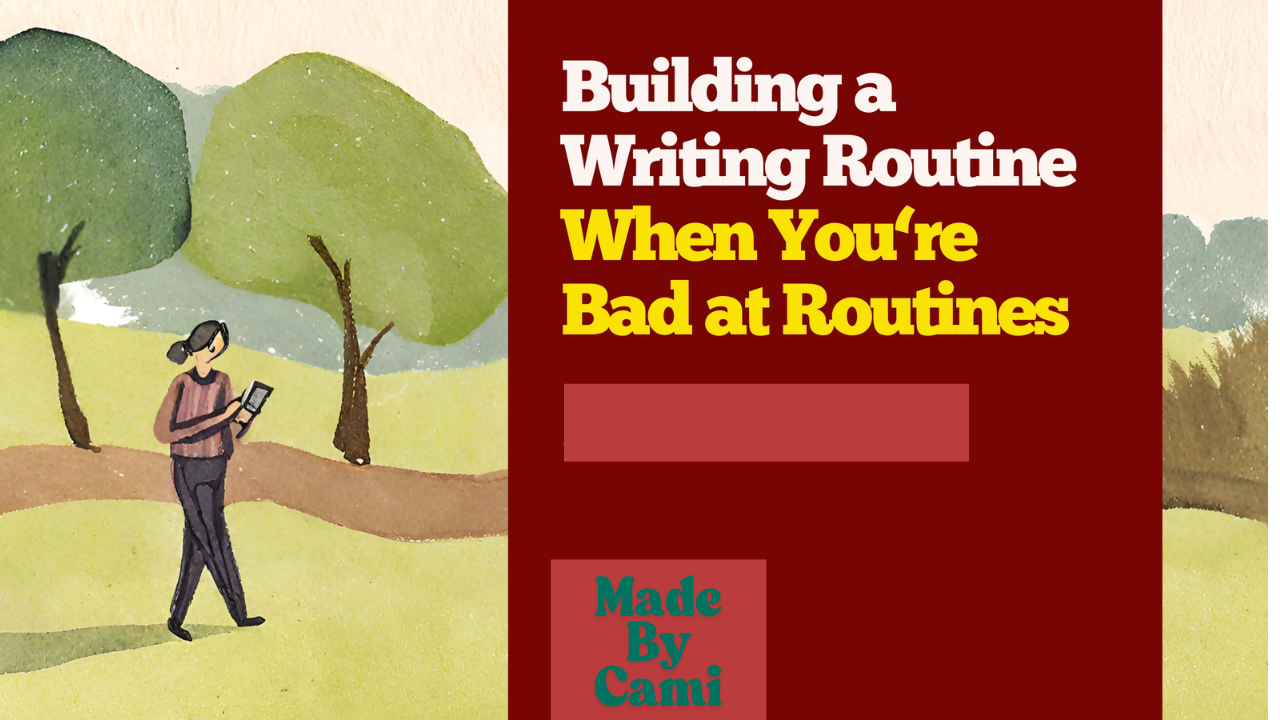How to Develop a Writing Routine That Works for You

This article will cover the best way to configure a writing routine for your life and purposes-whether it be blogging, storytelling, or doing work.
Why is a Writing Routine Important?
Writing routines help you address, in an orderly manner, the when-where-how of your writing process. When you miss out on having a writing routine, you may often find yourself getting into a habit of procrastination or hitting a wall of creativity. However, with a certain routine, here's what happens:
Kicks in Consistency: If you stick to a regular writing plan, you're gonna turn writing into something you do or weekly, not something you remember to do at the last minute.
Boosts Productivity: Stick to a routine, and you'll find it easier to use your time and keep those pesky distractions at bay. End result? You'll be cranking out more writing over time.
Strengthens Discipline: Keeping at it with your writing beefs up your work ethic, and this happens even on the days when writing is the last thing you wanna do.
Finding a routine that clicks with your rhythm can switch writing from a daunting task to something you look forward to and rock at.
Step 1: Identify Your Writing Goals
A writing routine builds up after having set purposes clearly for the undertaking. Why exactly do you write? Are you preparing a book, an online blog, or academic papers? Knowledge of what will really help in bringing about devising a practice that intends to suit such intention.
Types of Writing Goals to Consider:
Long-Term Goals: Like, getting a book done, rolling out a string of blog entries, or getting research findings published.
Short-Term Goals: Hitting a word count wrapping up a draft by week's end, or going through a chapter's edits.
Creative Goals: Trying out varied writing flavors, diving into an untouched story type, or just jotting down thoughts for your own joy.
Step 2: Set a Specific Time to Write
A good habit of writing entails a steady regimen of writing, which is why one must account for a window of time in which life can conveniently slip in and out of such a regimen.
Factors to Consider:
Energy Levels: Does the daybreak, midday, or twilight find you at full tilt? Keep tabs on the time your mind's in the game.
External Distractions: Pick a moment for scribbling when interruptions are least likely maybe at the crack of dawn before the daily grind or in the dead of night's hush.
Other Duties: Got a job or a household to juggle? Hunt for a writing window that gels with your daily hustle.
Step 3: Create a Writing Space
Your writing area is almost like a platform that gets you into the zone and keeps all the unwanted interruptions away. Work one out indoors at home, maybe in an office, or try out nearby cafés.
Tips for Creating a Productive Writing Space:
Cut Out Distractions: Kill your phone and computer notifications so you don't get sidetracked.
Tidy Up Your Area: Having a neat desk will help you stay sharp.
Boost Motivation: Have stuff around like books, sayings, or cool paintings that push you to meet your writing targets.
Get Comfy: Make sure your chair and desk feel good when you're gonna be writing for a good while.
A place made just for writing tells your mind that it's crunch time making it smoother to get in the zone for cranking out words.
Step 4: Start with Small Writing Sessions
New to writing off the top of your head, and previous attempts at trying to get into some sort of schedule were all for naught? Why not try writing in minute steps? That is, little bits here and there. As one gains some habit at writing, which usually takes a day or two getting used to, you can take on short bursts.
Recommended Writing Time:
Kick it off with 15 to 30 minutes of solid writing.
Work your way up to 1 hour or longer when you're good and ready.
You know that you have to stick to a proper writing schedule. Do not insist on some intense all-day writing on your first day. Emphasize consistency, and that means you will not get too drained to write.
Step 5: Use Writing Prompts or Goals
Facing an empty page and starting the writing process seems daunting already. If you want to get your writing on track, prompts, challenges, and clearly defined writing goals are some of the best ways to usher your imagination to start blossoming and your thought process to start flowing.
Writing Prompts:
"Talk about a super clear memory from when you were a kid."
"Pen a note to the you in the future."
"Imagine if a person in your story just forgot everything?"
Daily Word Count Goals:
Decide on a fair number of words you would like to write each day when you sit down to write. Try 500 for today. Now this becomes mandatory, right? Stick to your writing goals.
Timer Techniques:
Give a Pomodoro Timer (25 minutes of focused writing with a 5-minute chill time after) a go, or you could try other methods to keep your work sessions on point and doable.
Step 6: Eliminate Perfectionism
A big hurdle in getting words down is the worry over not nailing it the first time. Just gotta remember, no write-up is spot on from the get-go. Sticking to your writing habit means caring about getting better and not fussing over it being flawless. Write with the flow and don’t sweat over fixing every little thing as you write.
Tips for Overcoming Perfectionism:
Jot Down Ideas First, Tidy Up After: Keep the writing and proofreading steps separate to dodge getting bogged down in fixes. Just go ahead and spill your thoughts.
Aim for Achievable Goals: Recognize that writing’s a step-by-step thing. Don’t sweat your initial draft—it's a rough beginning.
High Five for Every Little Triumph: Whether it’s wrapping up a blog piece or ticking off a book chapter, give yourself some props for every milestone you hit.
You’ll feel way less weight on your shoulders and get a kick out of the scribbling journey more if you keep your eye on the step-by-step gains.
Step 7: Track Your Progress
Keeping an eye on victories may boost one's spirit and allow a little peek into the achievements. Scribbling something down in a journal or using an app may help keep track of your word count, the hours spent putting down words, and some hurdles along the way.
Tools to Help You Track:
Trello or Notion: They help you put your writing chores in order and keep an eye on your targets.
Google Sheets: You use this to make a basic chart that checks how many words you jot down each day and tracks your improvement over time.
Writing Apps: Tools like Scrivener and Evernote assist in sorting and keeping tabs on your writing projects.
Make it a habit to look over what you've done , that way you can keep laser-focused and mix things up with your routine when it's necessary.
Step 8: Be Flexible and Adaptable
Practice consistency, yes, but remain flexible. Life can be unpredictable, and there would be days that would just make your routine impossible. Be kind to yourself if you skip a workout or reschedule your plans. It is about keeping the rhythm over time, not about following a fixed routine to perfection here.
How to Stay Adaptable:
Move Missed Sessions: Skipped a writing sesh? Move it to a different time that day or maybe sometime in the week.
Scale Down Goals: When a target seems too much of a stretch, chop it into tinier easier bits.
Pause for Air: Remember, taking breaks is key to boost your brain juice for inventing stuff.
Flexibility makes sure you keep liking and sticking to your writing schedule even when things get crazy busy.


